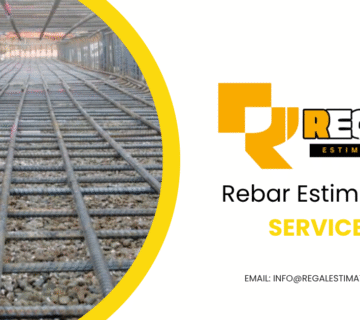What is Analogous Estimating?
Analogous estimating, also called top-down estimating, is a technique used in project management to estimate costs, duration, or resource needs based on historical data from similar past projects. It’s a high-level estimation method that’s quick, cost-efficient, and often used in the early stages of project planning.
This technique relies heavily on expert judgment and past experiences. For instance, if a construction firm previously built a 10,000-square-foot office building in six months at $1.2 million, they might estimate a similar-sized project with slightly altered variables to cost around the same, adjusted for inflation or location.
Why Choose Analogous Estimating for Your Project?
Speed and Simplicity
Analogous Estimating is perfect for fast-moving projects where early budget approvals are critical. Since it doesn’t require a detailed breakdown of each task, you save time without sacrificing too much accuracy.
Cost-Effective Planning
By avoiding the complexities of bottom-up estimation (which requires detailed planning and resources), analogous estimating helps you cut down planning costs by up to 30%.
Historical Data Advantage
Leveraging past project data not only speeds up the estimation process but also improves decision-making. The more historical records you have, the better your forecast accuracy.
How Regal Estimating Utilizes Analogous Estimating
Step-by-Step Process
- Project Scope Review: Regal Estimating reviews your current project’s scope.
- Data Comparison: The team compares your project with similar ones in their extensive historical database.
- Variable Adjustment: Adjustments are made for differences in size, materials, location, or labor cost.
- Expert Consultation: Senior estimators review and validate the initial figures.
- Final Report: A complete cost and timeline estimation is presented.
Tools and Technology Used
Regal Estimating uses industry-leading software such as:
- PlanSwift
- Bluebeam Revu
- Buildertrend
- MS Project
These tools help analyze, compare, and deliver highly reliable estimates within tight timelines.
ProjectManager.com – Estimating Techniques
Discover various estimation methods, including analogous, with real-world use cases.
When to Use Analogous Estimating
Best Fit Scenarios
- Early project phases
- When limited information is available
- Projects with clear historical analogs
- Budget-sensitive clients
Limitations and Considerations
- Less accurate for complex projects
- Doesn’t account for every task detail
- Can be biased based on limited data
- Requires professional judgment for reliability
Key Characteristics of Analogous Estimating
- Based on historical data from past projects.
- Quick and low-cost method—often used in early project planning stages.
- Less accurate than detailed methods like bottom-up estimating.
- Can be used for cost, duration, scope, or any other measurable project metric.
- Requires expert judgment and project similarity to be reliable.
When to Use Analogous Estimating
- When you have limited information about the current project.
- In preliminary planning or feasibility studies.
- When you have access to solid historical data.
- For high-level estimates to set expectations or budgets.
Limitations
- Inaccuracy if historical data is outdated or not truly comparable.
- Doesn’t account for project-specific complexities.
- Relies heavily on expert judgment and experience.
Best Practices
- Use analogous estimating with other methods (like parametric or bottom-up) for validation.
- Document assumptions clearly.
- Maintain a database of past projects to improve accuracy over time.
- Adjust for inflation, regional pricing, and scope differences.
Analogous Estimating vs Other Estimating Methods
Analogous vs Parametric Estimating
| Feature | Analogous | Parametric |
|---|---|---|
| Data Source | Past projects | Statistical data |
| Accuracy | Medium | High |
| Use Case | Early phases | Detailed phases |
| Speed | Fast | Moderate |
Analogous vs Bottom-Up Estimating
| Feature | Analogous | Bottom-Up |
|---|---|---|
| Detail Level | High-level | Granular |
| Time Required | Low | High |
| Accuracy | Moderate | Very high |
| Best For | Feasibility studies | Final budgeting |
Analogous Estimating in Project Management is a technique used to estimate project parameters—such as cost, duration, or resources—by comparing the current project (or component of it) to a similar, previously completed project.
It is widely used in project planning and early estimation stages, especially when detailed information is not yet available.
Definition (PMBOK Guide – PMI Standard)
“Analogous estimating uses values from a previous, similar project as the basis for estimating the same parameter or measure for a current project.”
(PMI – Project Management Body of Knowledge)
Where It’s Used in Project Management
- Project Time Management: Estimating activity durations.
- Cost Management: Estimating project or task costs.
- Scope Management: Estimating the extent of deliverables based on prior work.
Advantages
- Fast & inexpensive – requires less time and resources than detailed estimating.
- Useful in early project phases when limited data is available.
- Builds on organizational knowledge and past experience.
- Provides a baseline estimate quickly for stakeholder planning.
Disadvantages
- Less accurate – especially if historical projects differ in size, complexity, or environment.
- Prone to subjective judgment errors.
- Can mislead if critical differences between projects are ignored.
How It Works
- Identify a similar past project.
- Adjust the past project’s metrics (cost, time, etc.) for differences in size, scope, complexity, or conditions.
- Use the adjusted figure as an estimate for the current project.
PMI Process Group Placement
- Found in the “Estimate Costs” and “Estimate Activity Durations” processes under:
- Planning Process Group
- Project Cost Management
- Project Time (Schedule) Management
PMI – Analogous Estimating Definition
Learn how PMI describes and compares analogous and parametric estimating in project management.
Tips for Effective Analogous Estimating
- Keep a repository of past project data (costs, timelines, lessons learned).
- Always document assumptions and differences between the past and current projects.
- Involve subject matter experts (SMEs) to validate estimates.
- Use it as a sanity check alongside parametric or bottom-up methods.
Case Studies from Regal Estimating
Construction Industry
Client: ABC Construction
Project: Mid-rise office building
Savings: 27% in planning costs
Duration Reduction: 15% quicker estimation timeUsing historical data from similar commercial builds, Regal Estimating delivered a cost proposal in just 3 days, enabling the client to win a competitive bid.
IT Project Example
Client: TechWave Inc.
Project: Custom CRM Development
Approach: Used previous ERP systems as analogs
Result: Estimating completed 50% faster than usual, with only 5% variance in final budget.
Challenges in Analogous Estimating
Accuracy Trade-offs
Due to its high-level nature, this method can sometimes lead to under- or over-estimations if not adjusted properly.
Mitigating Risk
- Use multiple analogs, not just one
- Apply adjustment factors for unique project elements
- Always validate results with industry benchmarks
Tips to Improve Analogous Estimating Accuracy
- Maintain a detailed database of past projects
- Involve experienced professionals
- Document all adjustment assumptions
- Use technology to identify patterns
Key Metrics to Track During Estimating
- Cost variance
- Estimate accuracy (% deviation)
- Estimation time
- Win rate on bids using analog estimates
- Client satisfaction score
Tools Recommended by Regal Estimating
- PlanSwift: For digital takeoffs and measurements
- CostMiner: Simplified cost estimation
- ProEst: Ideal for integrating with other project management tools
- RSMeans Data: Industry-standard cost data
Client Testimonials
“Regal Estimating helped us bid faster and smarter. We landed a major contract thanks to their quick estimates!”
— Samir R., Project Manager at BuildRight
“Their use of past project data gave us confidence in the numbers. Highly recommend for early-stage planning.”
— Lindsay M., Director of Projects at SoftSys Inc.
FAQs
1. Is analogous estimating suitable for large-scale projects?
Yes, but it’s best used in the early phase. Detailed methods should follow later for complex execution.
2. How accurate is analogous estimating?
With quality historical data and proper adjustments, accuracy can reach up to 85%.
3. What industries benefit most from this method?
Construction, IT, manufacturing, and any field with repeatable project types.
4. Does Regal Estimating offer free consultations?
Yes, Regal Estimating offers a free initial consultation to discuss your project’s needs.
5. Can I combine analogous estimating with other methods?
Absolutely! It’s often combined with bottom-up or parametric methods for a hybrid approach.
6. Is software necessary for this type of estimating?
While not mandatory, software tools improve speed, consistency, and accuracy significantly.
Conclusion
Analogous estimating is a powerful, practical, and proven method for early-stage project planning. Regal Estimating has refined this technique to deliver fast, cost-effective, and dependable estimates. By leveraging historical data and expert insight, they empower clients to make informed decisions and stay ahead in competitive bidding environments.
Whether you’re in construction, IT, or manufacturing, Regal Estimating tailored approach ensures you get the most value from your estimation process.





No comment